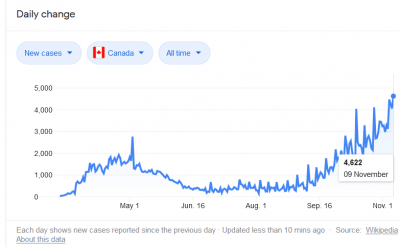There’s an ongoing argument in communications circles surrounding whether or not high speed internet should be considered a fundamental human right and thus, be accessible by everyone, right up there with the right not to be tortured or the right to free speech. The gist of the argument is that pro-human right people believe that internet access is necessary not just for the growth and competitiveness of the individual, but also for the community. A community without access to the internet is ultimately going to get left behind, and that’s why we need to close the gap.
Those in opposition state their need for profits, and how moving into every community doesn’t translate to their bottom line. If you go back far enough, you’ll find that most of what we considered to be human rights have gone through this kind of discussion before ultimately breaking through. This argument is unlikely to be settled anytime soon, especially when countries like the United States roll back human rights whenever it suits their political purposes.
Even if the cradle of democracy won’t uphold even the most basic precepts of its political contract, there’s no reason we shouldn’t. That’s why companies like Cogeco Communications (CCA.T) and privately-owned satellite communications company, Telesat, together with the Government of Canada, are working together to close the digital divide once and for all.
“With deep roots in regions and rural communities in Ontario and Québec, Cogeco is at the forefront of solving the connectivity challenges faced by consumers and businesses in underserved and unserved areas. Combining this new program and our own commitment to network expansion investment, we will continue to help close the gap in digital access and extend our regional high-speed Internet coverage across our footprint,” said Philippe Jetté, president and chief executive officer of Cogeco Communications.
Let’s not pretend for a second that this is one of our shining propaganda soft-power currying moments wherein we come together as a nation to serve all of humanity—this change is more out of necessity. The pandemic isn’t going away. We’re not flattening the curve at all and the numbers are getting stronger. Two weeks ago, British Columbia hadn’t scratched 300 new infections a day, and now we’re up over 1,000.
Here’s the daily change flow-chart. Note the decidedly curve-y curve:
If this continues then the federal government is going to stop being nice to us and order us all home for prolonged four to six month stay. For those of us working from home that’s merely a bummer. It shrinks your life down to a series of rooms and whoever you’ve got around you at the time. It can have mental health complications. For everyone else whose job requires your physical proximity—that’s a game changer with widespread economic and health ramifications. And it sucks.
But none of this would be possible if we didn’t have the internet. And if this pandemic has taught us anything it’s that we can expect the unexpected, and maybe listen to scientists instead of assholes on the internet going on about government conspiracies and mind control.
Here’s our perfectly coifed Prime Minister, Justin Trudeau to bring it home:
“Now more than ever, Canadians need reliable access to high-speed Internet as we work, learn, and communicate with our family and friends from home. With today’s announcement, we are continuing to bring faster Internet access to every part of our country, helping businesses grow, creating new jobs, and building a better Canada for everyone.”
Trudeau announced an investment of $1.75 billion to help Canadians connect to high-speed internet across the country, grow businesses and create jobs. He says that this investment will connect 98% of all Canadians across the country by 2026 with the goal being complete connection by 2030.
Trudeau also inked a $600 million agreement with Telesat to improve connectivity and expand high-speed internet coverage to the far north, rural and remote regions across Canada through low-earth-orbit satellite capacity. Cogeco announced in June 2019 that they would be making a four-year commitment and investing more than $1 billion in the expansion of its broadband network to traditionally unserved and underserved communities. Now with the addition of the Universal Broadband Fund, they’ll be able to look for more infrastructure projects to reach more communities in Canada.
Quick Facts
- The Universal Broadband Fund was announced in Budget 2019. It is part of a series of federal investments made to improve access to high-speed Internet, which are expected to connect nearly 400,000 additional households by the end of 2023.
- The Universal Broadband Fund will also allocate $50 million of its total budget for mobile Internet projects that primarily benefit Indigenous peoples. This includes projects along highways and roads, and in Indigenous communities, where mobile connectivity is lacking.
- The Government of Canada has already made significant progress toward its goal of connecting all Canadians to high-speed Internet by 2030, by supporting projects and programs that will connect 1.2 million Canadian households over the next few years.
- The Government of Canada will work with partners to provide all Canadians with at least 50 megabits per second download speeds and 10 megabits per second upload speeds, no matter where they are in the country. These speeds will allow Canadians to telework, participate in e-learning, and access telehealth resources.
- The Canada Infrastructure Bank recently announced a $2 billion broadband initiative as part of the Growth Plan. This initiative will help connect approximately 750,000 homes and small businesses to broadband in underserved communities, so Canadians can better participate in the digital economy.
The hidden beneficiaries of this deal aren’t quite so easy to see right away. The Cogeco’s and the Telesats and probably the Rogers and the Shaw’s are going to make money off of this deal, obviously. But there are some other companies out there in peripheral industries that are going to be able to reach out to these underserved communities and make a difference while drawing in revenues.
Let’s consider for example, Predictmedix (PMED.C). They’re primarily known for constructing COVID-19 detection gateways that scan anyone who goes through and spit out readouts about their vital stats to best determine if they’re well enough to be present. It’s a necessary service, but it’s caught a few snags in its supply chain. That happens. But they’ve also recently bought a telehealth platform called MobileWellbeing, and that’s where the opportunity lies.
For as long as I’ve been alive, Canada’s been short on doctors. Physician supply in Canada continues to outpace population growth. In 2018, there were 241 physicians per 100,000 population: 122 family medicine physicians and 119 specialists per 100,000 population. The data may be two years out of date, but this problem isn’t getting better. It’s worse the more north you get. Eventually, the road stops and the only means of travel is dogsled.
How many doctors do you think make house calls via dog sled?
For those folks up there, they need the internet more than ever because it may give them access to medical care.
Consider this, from equity guru’s own Lukas Kane:
MobileWellbeing solution enables care to shift from a hospital-centric model to community-centric healthcare. As an example, services for COVID-19 patients:
- Ability to deliver a specific COVID-19 care plan protocol that can include specific vitals signs monitoring, medications, diet/exercise/educational content and specific questionnaires
- Vital Signs monitoring for Blood Oxygen saturation level (using pulse oximeter), a key indicator of respiratory distress, Temperature (using thermometer) and other parameters required using Bluetooth sensors
- Ability to capture data based on specific questionnaires to monitor level of breathlessness
- Ability to monitor Medication compliance
- Ability to engage patient in a video visit for a one-on-one discussion while completing clinical notes and capturing vital signs at the same time
It’s not exactly like being there. Nothing can beat an actual doctor visit. But a communication device where you can take readings, make assessments and come up with a course of treatment is better than having nothing at all. In order to do that we need the internet. Good health is considered under the third rule of the United Nations universal declaration of human rights under section 3—specifically tied to dignity—then it’s not too much of a stretch to say that maybe the internet should be as well.
—Joseph Morton
Full disclosure: Predictmedix is an equity.guru marketing client.








